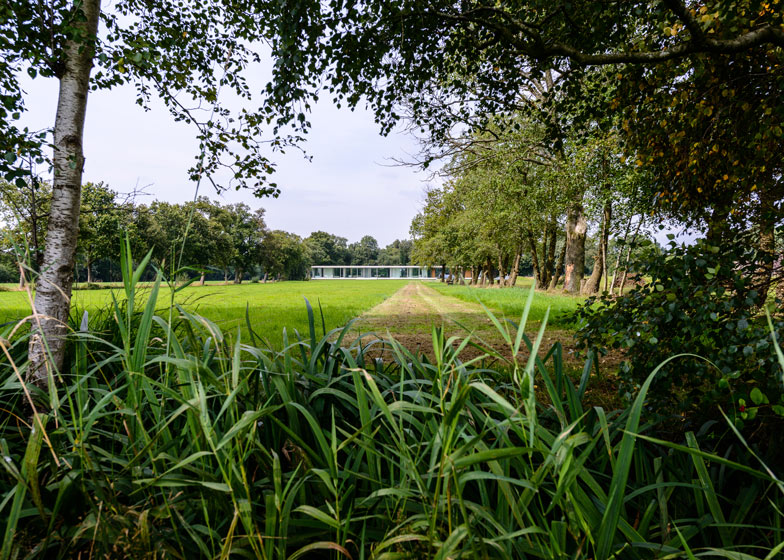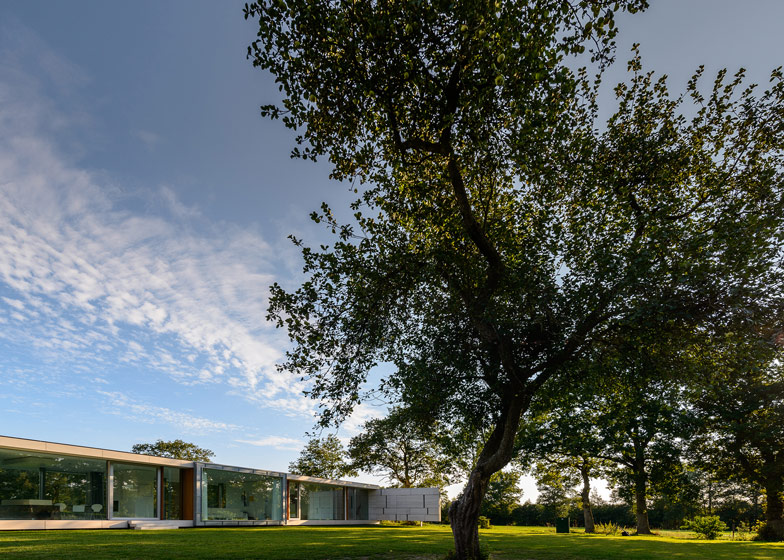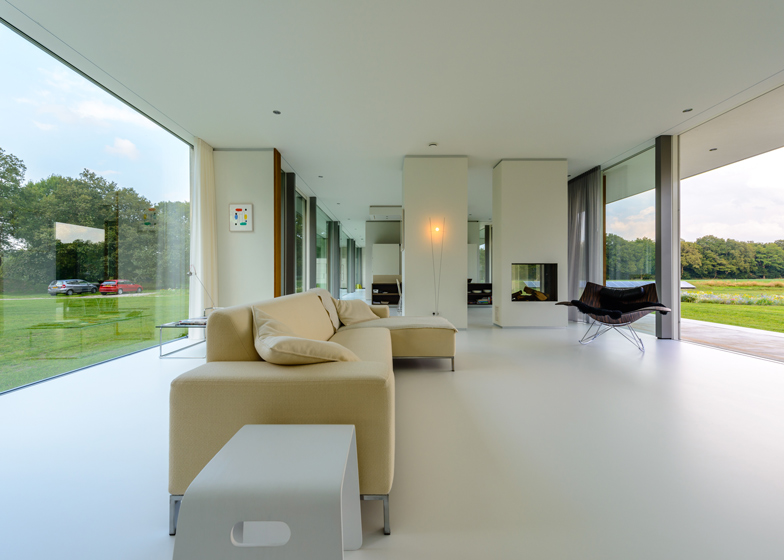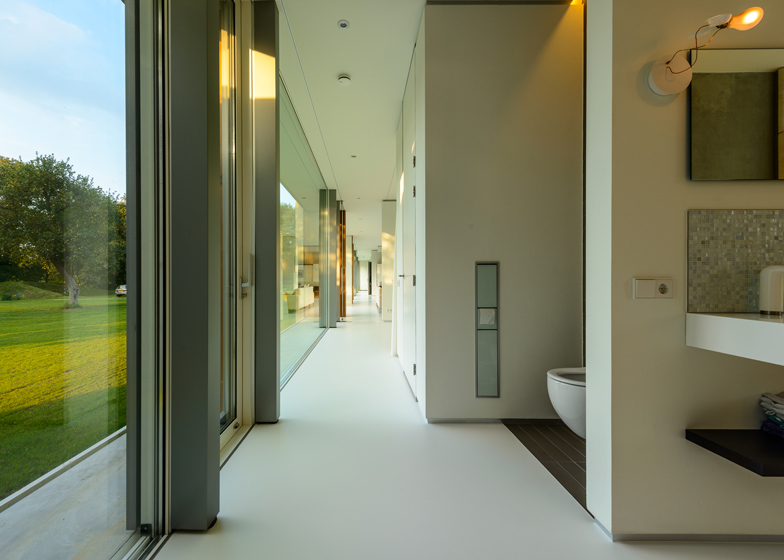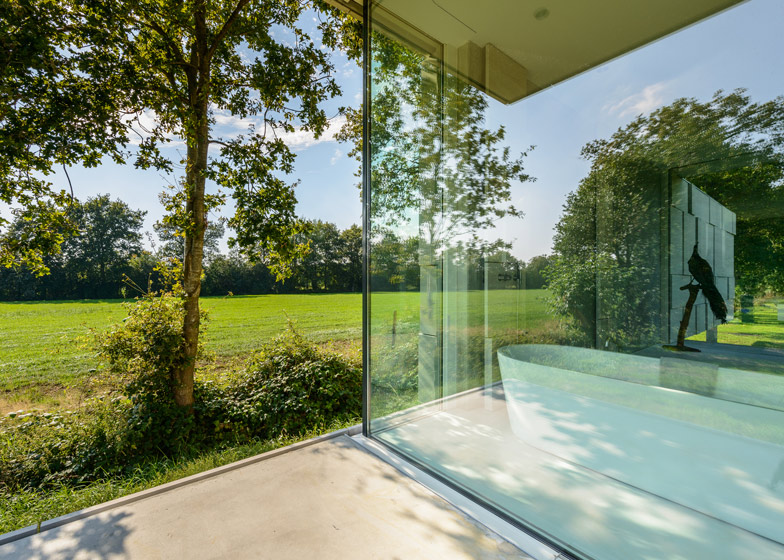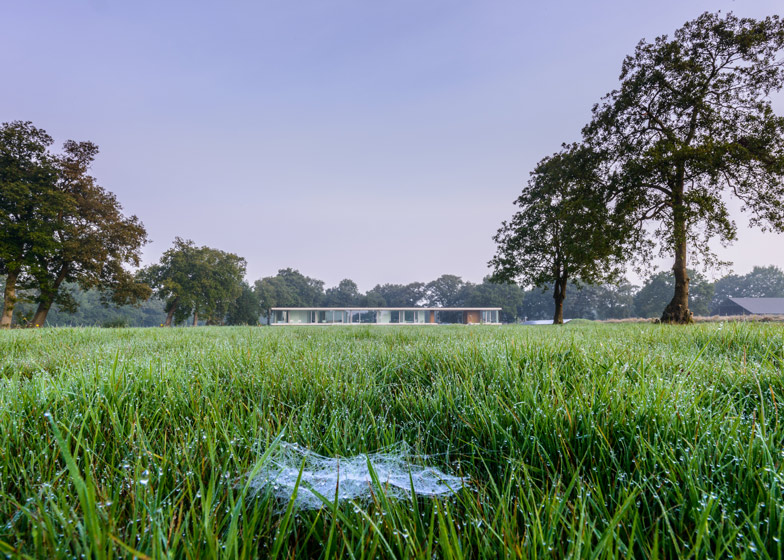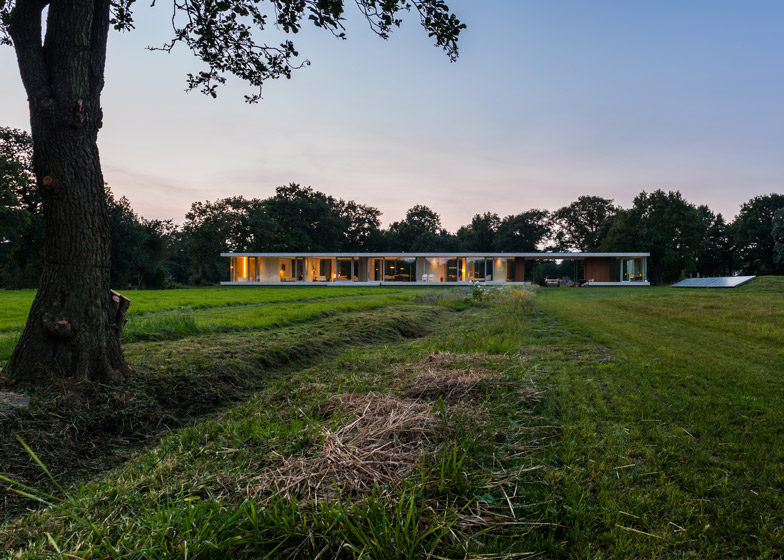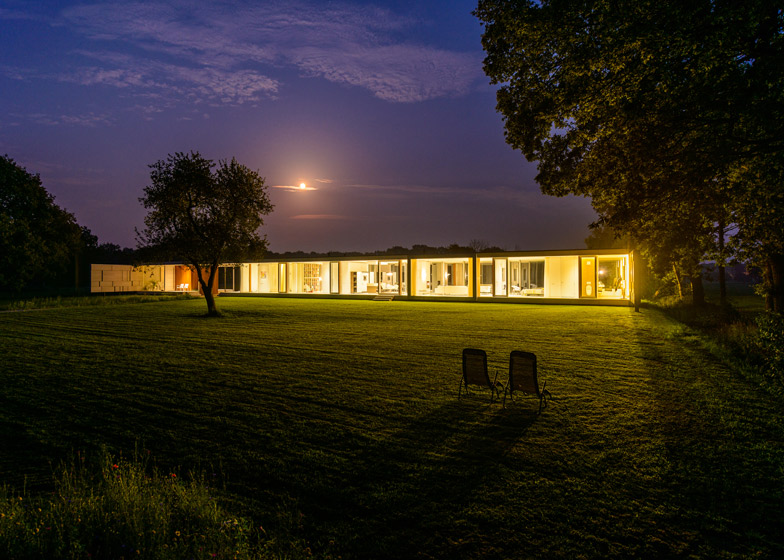Dutch architecture studio Inbo has completed a transparent house in the Netherlands and has hidden it behind a grove of trees to protect the privacy of its residents (+ slideshow).
The single-storey house, named Villa Sterk, stretches across the full width of its site and features floor-to-ceiling glazing on its two longest sides, allowing views right through the building.
Inbo orientated the house so that its two long facades face north and south. "The location on the lot creates a north and a south facade with a public side and a private side, a sunny side and a shady side," said the architects.
A dirt track leads up to the house from the nearby road. After passing through the woodland, the route leads into a sheltered driveway that cuts the house into two parts.
The smallest section accommodates a storage area and private office, while the larger side contains the main living spaces, which include an open-plan living and dining room, a pair of bedrooms and a separate study.
The house is raised slightly above the ground, so the architects have added small staircases and a ramp at various points around the perimeter, enabling easy access from the surrounding garden.
"The ground floor floats just above the earth as if the house has not yet 'landed' and is a guest in the landscape," said the architects.
The end walls of the house are made from stone and extend out into the garden, while the glazed elevations feature doors that slide open.
Concrete walls and floors throughout the building's interior are finished with natural white stone or stucco.
Solar panels have been installed in the garden to provide a self-sufficient energy source. The architects also want to add a folly at the end of the garden where residents can enjoy a cup of tea.
Photography is by Auke van der Weide.
Here's a project description from Inbo:
Villa Sterk
Living in the countryside
On the outskirts of Bontebok, a village north of Heerenveen, Mr. and Mrs. Sterk have built a very special and interesting house. The long sweeping plot on which the house was built, is tucked away in the Frisian landscape and surrounded by 'tree walls', hiding it from the road.
Long lane through the private landscape
The house is designed within the landscape context. By placing the house across the full width of the lot, the lot is divided into a courtyard on the entrance side of the house and into an open landscape garden on the other side.
A long driveway leads the visitor through a small forest and the courtyard to the front door located at the entrance gate leading to the landscaped garden. The lane ends at the southern edge of the plot in the quiet of the countryside. At this point we suggested to make a folly where one can enjoy a cup of tea, while enjoying the silence of the landscape and the view of your home.
Inside and outside space gradually merge together
The architecture supports the spatial seclusion of the place. The location on the lot creates a north and a south facade with a public side and a private side, a sunny side and a shady side. The lot is enclosed by mature tree walls.
Where the tree rampart touches the house, a natural stone wall takes over the guidance of the landscape and at the same time serves as the termination on both short sides of the house. On the south side the stone wall retreats a little and provides a diagonal view of the landscaped garden. The ground floor floats just above the earth as if the house has not yet 'landed' and is a guest in the landscape.
Sustainable and energy efficient
The floors, walls and ceilings of the house are made of concrete, finished with natural white stone or stucco. High quality and durable materials that have been used include aluminum frames and high efficiency glass. The heat and cold storage in the ground ensures that no gas is needed. Together with a long narrow strip of solar collectors in the landscape garden, the house is very energy efficient.
Team: Eerde Schippers, Olof Schonewille, Fokke de Vries
Location: Bontebok, The Netherlands
Area: 470 sqm
Project Year: 2013



